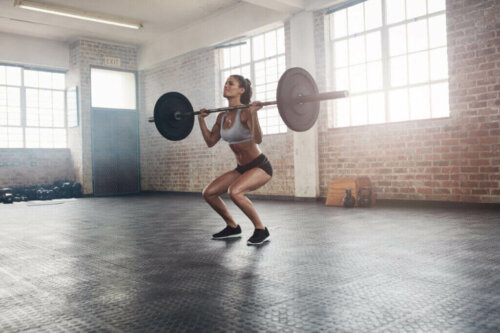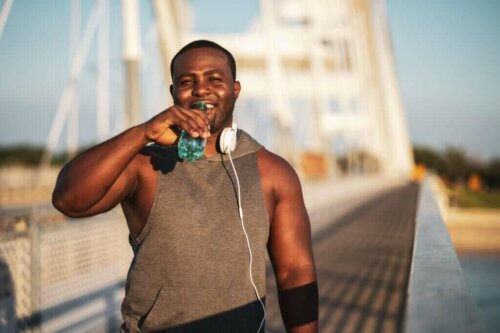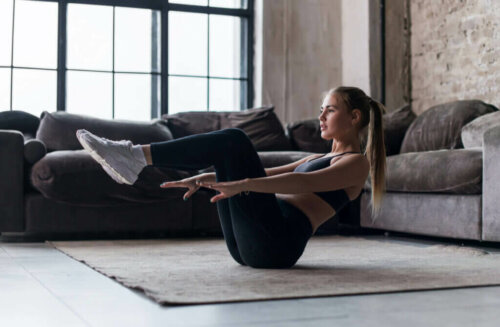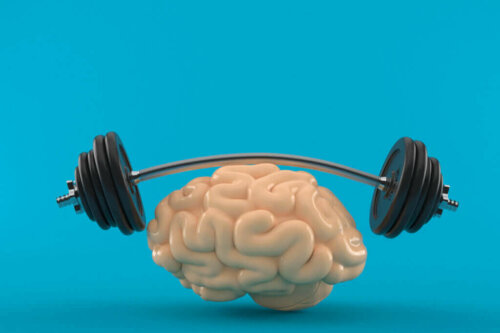Targeting your Rear Deltoid with your Back and Shoulders

In this article, we’ll go over a few exercises that are useful for targeting your rear deltoid with your back and shoulders. Keep reading to learn everything you need to know.
The deltoid is a muscle in your shoulders; it covers the front of your body to your back. The rear deltoid isn’t as popular as other muscle groups but targeting your rear deltoid is indeed important. This is because it’s critical to balancing out your back and shoulder muscles.
Targeting your rear deltoid
The rear deltoid surrounds the shoulder joints. As such, it makes a difference in your chest and back’s muscle structure, and most notably in your shoulders.
Still, you have to be very careful when training your rear deltoid for two reasons:
- Firstly, you have to be really focused on the exercises to target your rear deltoid instead of the rest of your back muscles.
- Weight training is a great help, but you don’t need too much weight to avoid diverting your effort to other muscles.
What’s more, you should make sure you perform rear deltoid exercises properly and with extreme caution. Failing to do so could result in months of injury recovery.
Keep reading about: The Best Shoulder Exercises For Women
Targeting your rear deltoid
The rear deltoid is a part of the body that can be difficult to work on. As such, there’s a limited number of exercises that target it. But that’s not a problem; rather, it helps with muscle memory and perfecting your technique.
The exercises you can use to work your rear deltoid with your back and shoulders include the following:
Halo
Halos are a CrossFit exercise. Firstly, you’ll need a kettlebell; the weight depends on your strength. Choose one from 4 kg to 8 kg. This exercise tones and defines your shoulders and shoulder blades. To do a halo, follow these steps:
- Stand up straight with your back straight. Then, look straight ahead and hold the weight with both hands using the handle. The part below the handle has to go upward. In other words, the weight should be inverted.
- Then, bring the weight up to eye level. Now, pass it behind your head until you return to your starting point. Think of how you move when you put on a jacket.
- Repeat the movement but in reverse.
- Do 4 sets of 20 repetitions.
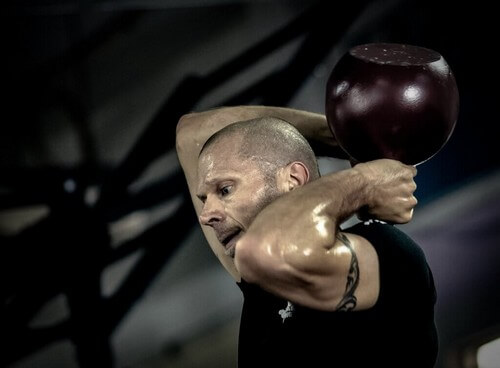
Rear lateral raises
Rear lateral raises are usually done with dumbbells that aren’t too heavy. Make sure you keep the proper posture of your neck. Then, press down with your shoulders to really target your deltoids. To do rear lateral raises, follow these steps:
- Firstly, stand with your feet apart and your back straight with a dumbbell in each hand.
- Then, slightly lean forward without arching your back. You can bend your knees a little without letting them go past your feet.
- Then, in this position, raise your arms to the sides until they’re aligned with your shoulders. Make sure you tighten your rear deltoids.
- Do 5 sets of 10 repetitions.
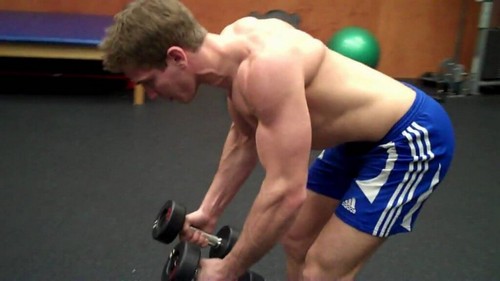
Push-ups: targeting your rear deltoid
This is an ideal option if you want to work out without weights. Or, it can be the first exercise you do before moving on to using weights. There are three kinds of push-ups that are good for targeting the rear deltoid:
Incline push-ups
To do an incline push-up, you only need a chair on which you’ll support your arms and create an incline with your body. So, it’s like doing a normal push-up only your hands are resting on the floor instead of on a chair. Do 5 sets of 20 push-ups.
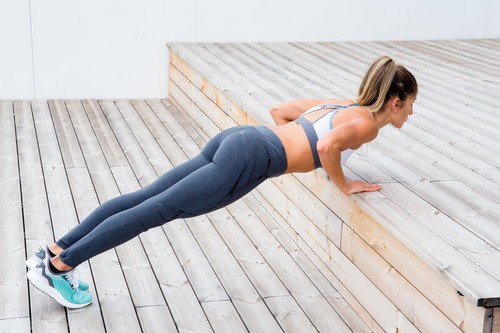
Pike push-ups
While this push-up isn’t very common, it can give you great results. Firstly, get into a downward dog yoga pose (like an inverted V). While in that pose, bend your elbows, bringing your head down while keeping your back and legs in a straight line. Also, you should always be looking toward your legs as opposed to your hands or to the front. Try doing 4 sets of 15 push-ups.
Read more: Are You Capable of Doing Yoga?
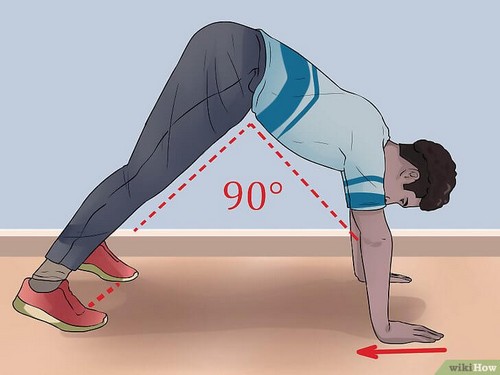
Incline pike push-ups
This push-up requires strength and balance. As such, we recommend that you master pike push-ups before doing incline pike push-ups. You’ll need a chair to support your feet so that your body is in a position that’s more challenging for your arms. See if you can do 6 sets of 10 push-ups.
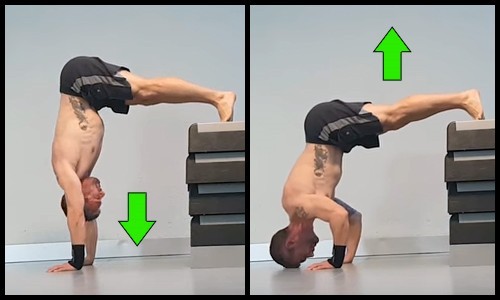
Rear deltoid exercises involve the rest of your shoulder and back muscles. As such, they shape those areas of the body in a balanced way for your frame. Now that you know about these exercises, there’s no excuse for not having strong and defined shoulders!
In this article, we’ll go over a few exercises that are useful for targeting your rear deltoid with your back and shoulders. Keep reading to learn everything you need to know.
The deltoid is a muscle in your shoulders; it covers the front of your body to your back. The rear deltoid isn’t as popular as other muscle groups but targeting your rear deltoid is indeed important. This is because it’s critical to balancing out your back and shoulder muscles.
Targeting your rear deltoid
The rear deltoid surrounds the shoulder joints. As such, it makes a difference in your chest and back’s muscle structure, and most notably in your shoulders.
Still, you have to be very careful when training your rear deltoid for two reasons:
- Firstly, you have to be really focused on the exercises to target your rear deltoid instead of the rest of your back muscles.
- Weight training is a great help, but you don’t need too much weight to avoid diverting your effort to other muscles.
What’s more, you should make sure you perform rear deltoid exercises properly and with extreme caution. Failing to do so could result in months of injury recovery.
Keep reading about: The Best Shoulder Exercises For Women
Targeting your rear deltoid
The rear deltoid is a part of the body that can be difficult to work on. As such, there’s a limited number of exercises that target it. But that’s not a problem; rather, it helps with muscle memory and perfecting your technique.
The exercises you can use to work your rear deltoid with your back and shoulders include the following:
Halo
Halos are a CrossFit exercise. Firstly, you’ll need a kettlebell; the weight depends on your strength. Choose one from 4 kg to 8 kg. This exercise tones and defines your shoulders and shoulder blades. To do a halo, follow these steps:
- Stand up straight with your back straight. Then, look straight ahead and hold the weight with both hands using the handle. The part below the handle has to go upward. In other words, the weight should be inverted.
- Then, bring the weight up to eye level. Now, pass it behind your head until you return to your starting point. Think of how you move when you put on a jacket.
- Repeat the movement but in reverse.
- Do 4 sets of 20 repetitions.

Rear lateral raises
Rear lateral raises are usually done with dumbbells that aren’t too heavy. Make sure you keep the proper posture of your neck. Then, press down with your shoulders to really target your deltoids. To do rear lateral raises, follow these steps:
- Firstly, stand with your feet apart and your back straight with a dumbbell in each hand.
- Then, slightly lean forward without arching your back. You can bend your knees a little without letting them go past your feet.
- Then, in this position, raise your arms to the sides until they’re aligned with your shoulders. Make sure you tighten your rear deltoids.
- Do 5 sets of 10 repetitions.

Push-ups: targeting your rear deltoid
This is an ideal option if you want to work out without weights. Or, it can be the first exercise you do before moving on to using weights. There are three kinds of push-ups that are good for targeting the rear deltoid:
Incline push-ups
To do an incline push-up, you only need a chair on which you’ll support your arms and create an incline with your body. So, it’s like doing a normal push-up only your hands are resting on the floor instead of on a chair. Do 5 sets of 20 push-ups.

Pike push-ups
While this push-up isn’t very common, it can give you great results. Firstly, get into a downward dog yoga pose (like an inverted V). While in that pose, bend your elbows, bringing your head down while keeping your back and legs in a straight line. Also, you should always be looking toward your legs as opposed to your hands or to the front. Try doing 4 sets of 15 push-ups.
Read more: Are You Capable of Doing Yoga?

Incline pike push-ups
This push-up requires strength and balance. As such, we recommend that you master pike push-ups before doing incline pike push-ups. You’ll need a chair to support your feet so that your body is in a position that’s more challenging for your arms. See if you can do 6 sets of 10 push-ups.

Rear deltoid exercises involve the rest of your shoulder and back muscles. As such, they shape those areas of the body in a balanced way for your frame. Now that you know about these exercises, there’s no excuse for not having strong and defined shoulders!
All cited sources were thoroughly reviewed by our team to ensure their quality, reliability, currency, and validity. The bibliography of this article was considered reliable and of academic or scientific accuracy.
- Moore, K. L., Dalley, A. F., & Agur, A. M. R. (2001). Clinically oriented anatomy. Journal of Chemical Information and Modeling (7th ed., Vol. 53, p. 1134). https://doi.org/10.1017/CBO9781107415324.004
- Escamilla, R. F., Yamashiro, K., Paulos, L., & Andrews, J. R. (2009). Shoulder muscle activity and function in common shoulder rehabilitation exercises. Sports Medicine. https://doi.org/10.2165/00007256-200939080-00004
This text is provided for informational purposes only and does not replace consultation with a professional. If in doubt, consult your specialist.



